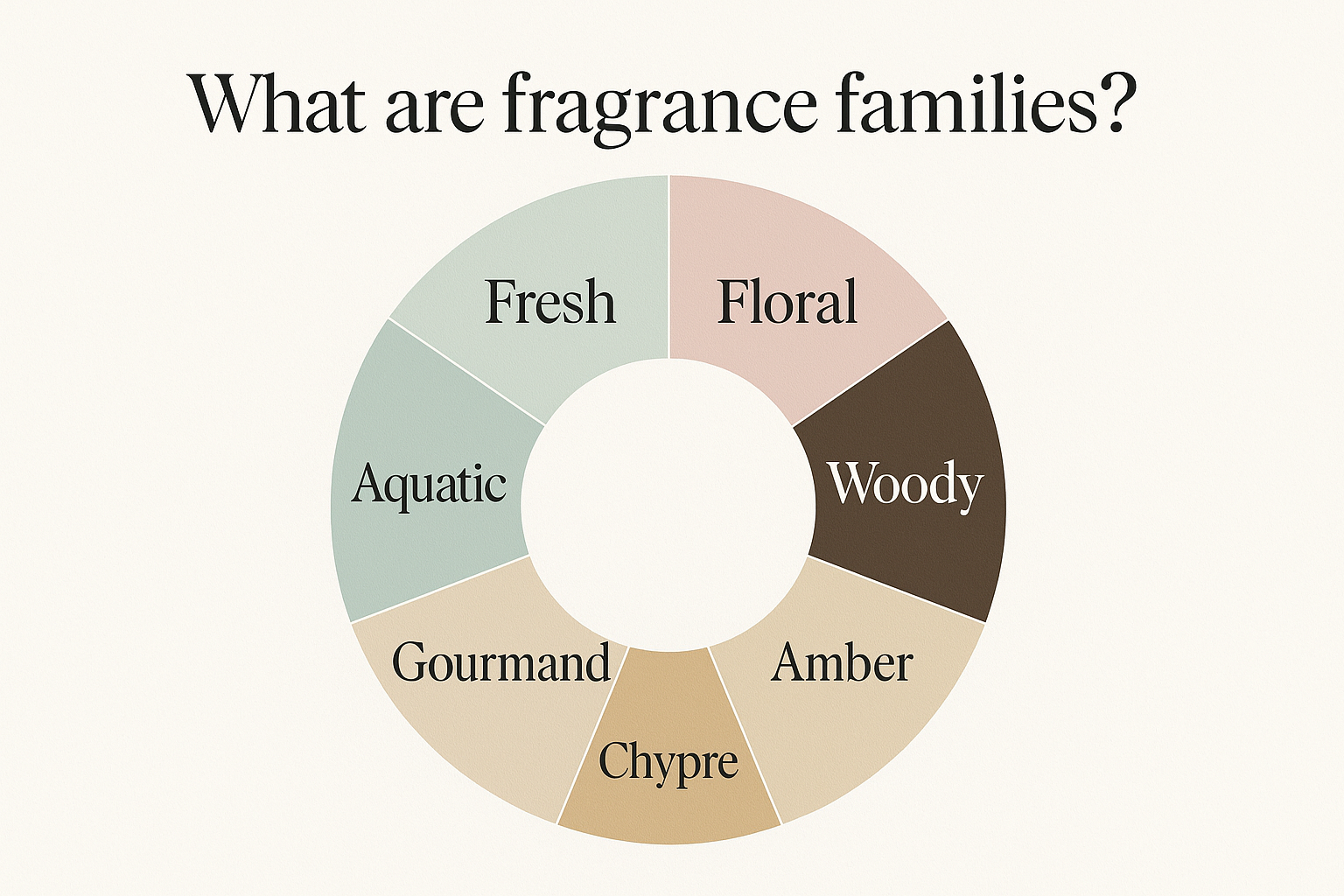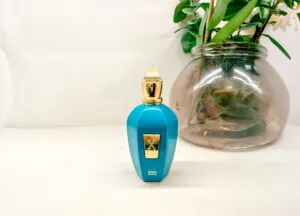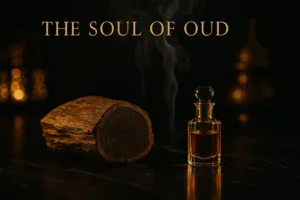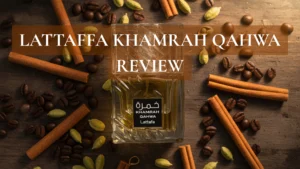Introduction: What Are Fragrance Families and Why Do They Matter
One of the most common things I see at Liquo, the niche perfumery where I work, is confusion. Customers often walk in, test a few perfumes, and quickly feel lost. They’ll say, “This one feels too heavy, that one too sweet, and this one reminds me of a bookstore.” Then comes the real question: “How do I even know what to choose?” The solution is learning what are fragrance families.
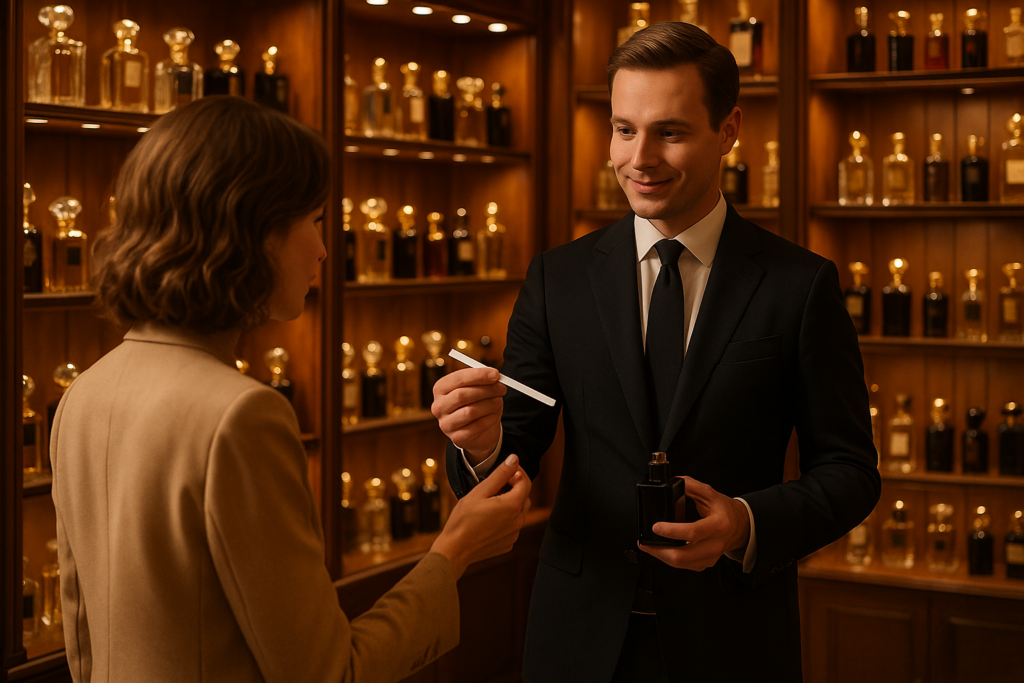
Think of it like music. Just as music has genres like rock, pop, or jazz, perfumes also fall into categories. Some people love the brightness of Fresh fragrances, others fall for the romance of Florals, and some are drawn to the depth of Woody or Amber scents.
Once you know your favorite genre of scent, choosing becomes easier. This is also the first step toward finding your signature scent. Instead of guessing, you can shop with purpose. You’ll know why you like certain scents, what to test next, and how to build a fragrance wardrobe that reflects who you are.
Quick Summary for What Are Fragrance Families
Fragrance families are categories that organize perfumes by their main scent character. They are the easiest way to understand perfume, because they give you a map of the fragrance world.
The main fragrance families include:
- Fresh: Bright, citrusy, green, aquatic.
- Floral: Romantic, versatile, timeless.
- Woody: Grounded, deep, textured.
- Amber: Warm, resinous, sensual.
- Chypre and Fougère: Classic structures that influenced modern perfumery.
- Modern subfamilies: Gourmand, Aquatic, Aromatic.
Understanding what are fragrance families helps you shop more confidently, experiment with layering, and find your signature scent.
What Are Fragrance Families in Perfume?
Fragrance families are categories that group perfumes by their dominant scent profile. They give structure to the world of perfume, helping both professionals and consumers identify patterns and preferences. If you are completely new to the world of fragrance, it might help to start with my beginner-friendly guide on what is perfume before diving into families.
The most famous system was created by Michael Edwards, a fragrance expert who developed the Fragrance Wheel in 1983. His classification organizes perfumes into four main families, Fresh, Floral, Woody, and Amber, and includes classic categories like Chypre and Fougère, as well as modern evolutions such as Gourmand and Aquatic.
You can explore his full system at Fragrances of the World, which is considered the industry reference.
As Edwards says: “Perfume is the most personal form of luxury. Classification helps us navigate perfume and discover what we love.”
Why Does Knowing What Are Fragrance Families Matter?
They Simplify Perfume Shopping
Instead of testing 20 bottles blindly, knowing you love citrus or sandalwood helps you narrow your search to specific families. Some families shine in summer while others glow in winter. You can learn more about seasonal pairings in my guide on how to know which season a fragrance is designed for.
They Explain Perfume Structure
Perfume is built in layers: top, middle, and base notes. Families show how those layers come together to create a style.
They Guide Seasonal and Occasion Choices
Fresh perfumes feel refreshing in summer, while Woody and Amber perfumes bring warmth in winter.
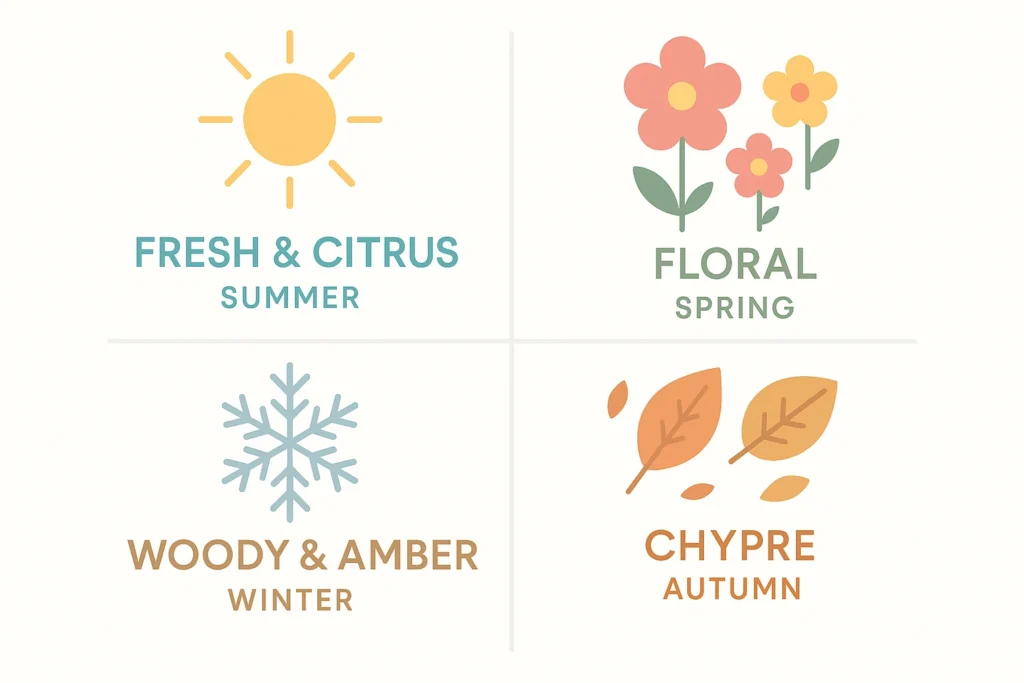
They Help With Layering
At Liquo, I often suggest layering combinations. Families make it easier to see which scents blend naturally. Check out this guide to layering on perfumery.
They Lead You to Your Signature Scent
Perfume connects deeply to memory and self-expression. The International Fragrance Association (IFRA) notes that fragrance is tied to emotional identity. Families give you the language to express that identity.
Fresh Fragrance Family: The Energy of Clean Scents
Fresh perfumes often fade quickly, but you can make them last longer with a few tricks. See my guide on how to make perfume last longer for practical tips.
Essence: Crisp, bright, and uplifting. Fresh perfumes feel like a morning breeze or sparkling citrus water.
Facets: Citrus, Green, Aquatic, Aromatic.
Common notes: Bergamot, lemon, grapefruit, mint, basil, tea, cucumber, marine accords.
Best occasions: Daytime, hot weather, gym, work meetings.
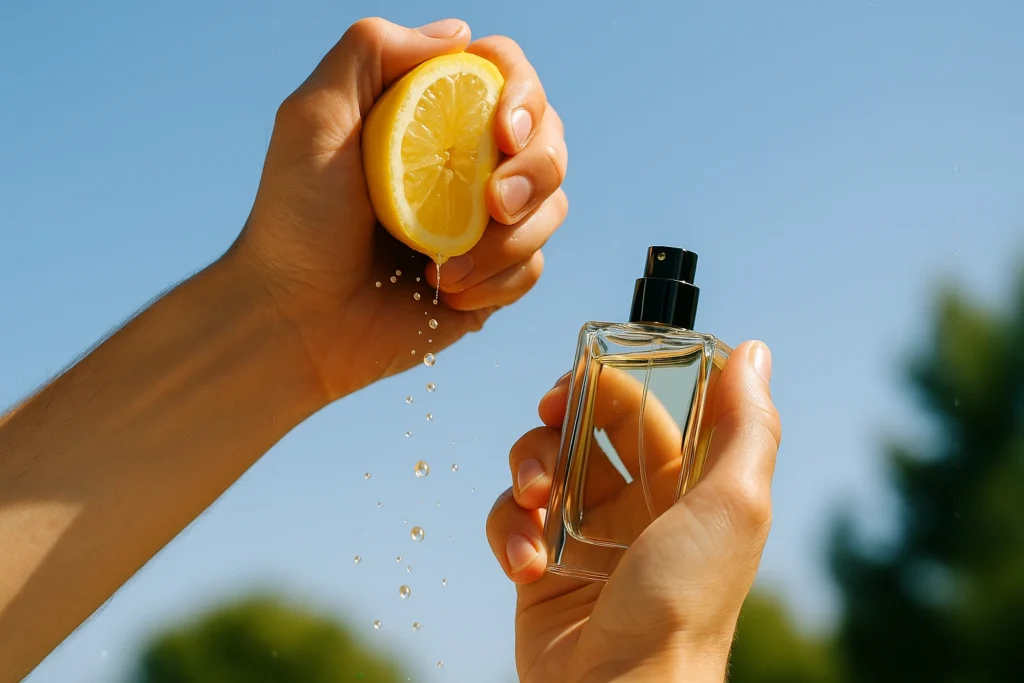
Popular Examples of Fresh Perfumes
- Creed Silver Mountain Water: Tea and citrus freshness with alpine character.
- Jo Malone Lime Basil & Mandarin: A refined citrus with aromatic depth.
- Issey Miyake L’Eau d’Issey: Iconic aquatic freshness.
- Niche pick: Nishane Wulong Cha: A refreshing tea and fig leaf blend.
💡 Liquo tip: If you feel Fresh perfumes fade too quickly, apply them on moisturized skin or layer them over a citrus body lotion.
Layering Ideas With Fresh Perfumes
- Pair with Florals for brightness.
- Combine with Woody bases to add structure.
- Add a splash of Amber in the evening for more depth.
Floral Fragrance Family: Nature’s Poetry Bottled
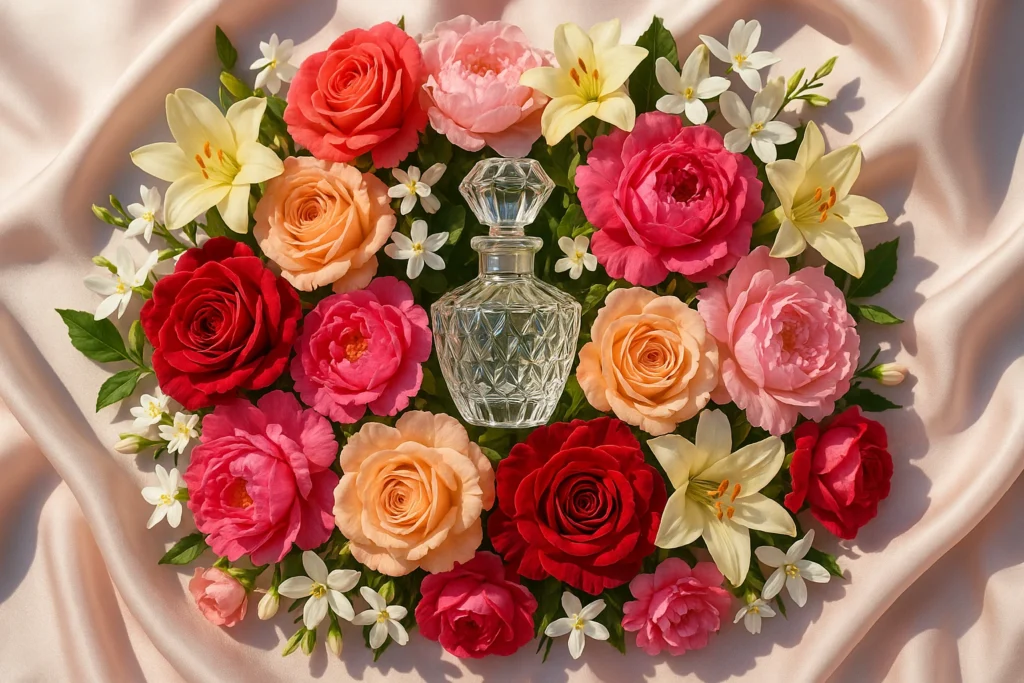
Essence: Romantic, versatile, and timeless. Florals can be soft, lush, or intensely sensual.
Facets: Rose, Jasmine, Iris, Peony, Tuberose, Orange Blossom.
Common notes: Rose, violet, jasmine, lily, tuberose, peony, iris.
Best occasions: Weddings, dates, everyday elegance.
Popular Examples of Floral Perfumes
- Dior J’adore: A luminous fruity-floral classic.
- Byredo La Tulipe: Fresh tulips and green stems.
- Chanel No. 5: The iconic floral aldehyde.
- Niche pick: Heeley Iris de Nuit: A moonlit iris, refined and cool.
Perfume critic Luca Turin once wrote: “Flowers are nature’s poetry, bottled.” To learn more about this family, read about Iris in perfumery.
Layering Ideas With Floral Perfumes
- Add a Woody base for sophistication.
- Pair with Amber for warmth.
- Mix with Fresh citrus for a light, breezy effect.
Woody Fragrance Family: The Strength of Nature
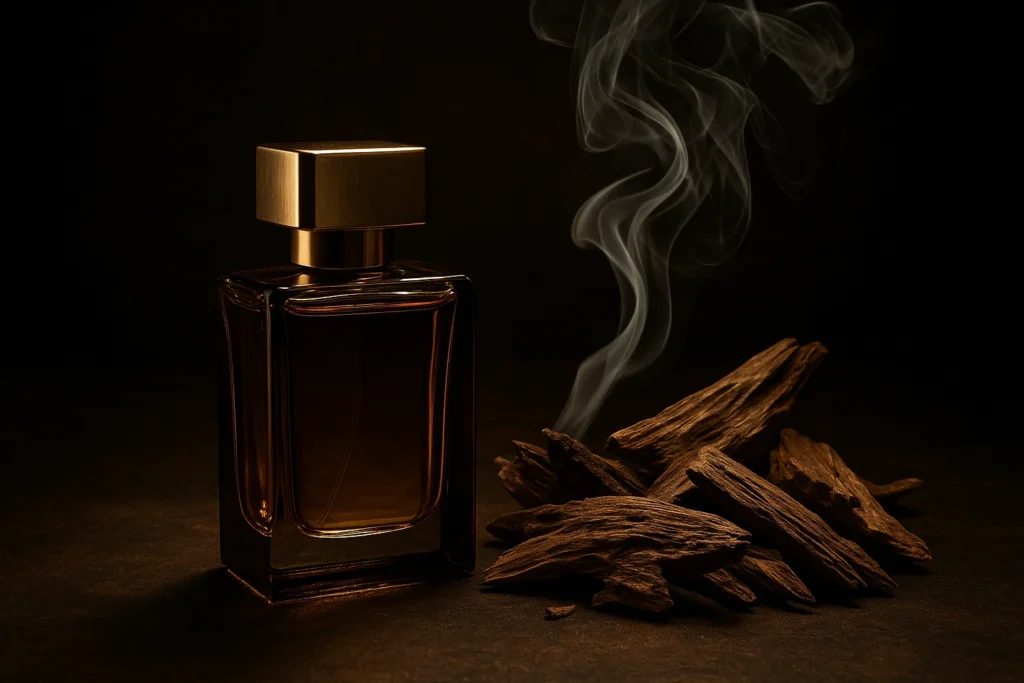
Essence: Grounded, deep, and textured. Woody perfumes bring to mind polished woods, forests, or incense.
Facets: Sandalwood, Cedar, Vetiver, Oud.
Common notes: Sandalwood, cedar, patchouli, vetiver, oud.
Best occasions: Autumn, winter, evenings, and professional confidence.
Learn about oud in perfumery in this guide!
Popular Examples of Woody Perfumes
- Le Labo Santal 33: A cult sandalwood favorite.
- Diptyque Tam Dao: Meditative sandalwood and cypress.
- Hermès Terre d’Hermès: Mineral citrus layered over vetiver.
- Niche pick: Marc-Antoine Barrois B683: A saffron and leather-tinged woody.
💡 Liquo tip: Woody perfumes work beautifully as anchors for layering. Spray them first, then add a lighter scent on top.
Layering Ideas With Woody Perfumes
- Add Fresh citrus for balance.
- Pair with Amber for richness.
- Combine with Floral for elegance.
Amber Fragrance Family: Warmth and Glow

Essence: Warm, resinous, sensual. Amber perfumes feel like golden light.
Facets: Spicy Amber, Sweet Amber, Resinous Amber.
Common notes: Vanilla, benzoin, tonka, incense, cinnamon, labdanum.
Best occasions: Autumn, winter, cozy nights, formal events.
Popular Examples of Amber Perfumes
- Maison Francis Kurkdjian Grand Soir: A golden amber masterpiece.
- Guerlain Shalimar: The original amber vanilla icon.
- YSL Opium: Bold, spicy, and unforgettable.
- Niche pick: Mendittorosa Nettuno: A cosmic amber with iris.
You can read about saffron in perfumery here!
💡 Today, many experts prefer the term Amber instead of Oriental.
Layering Ideas With Amber Perfumes
- Add Woody bases for complexity.
- Pair with Gourmand for indulgence.
- Combine with Floral for richness.
Chypre and Fougère: What Are Fragrance Families
Chypre
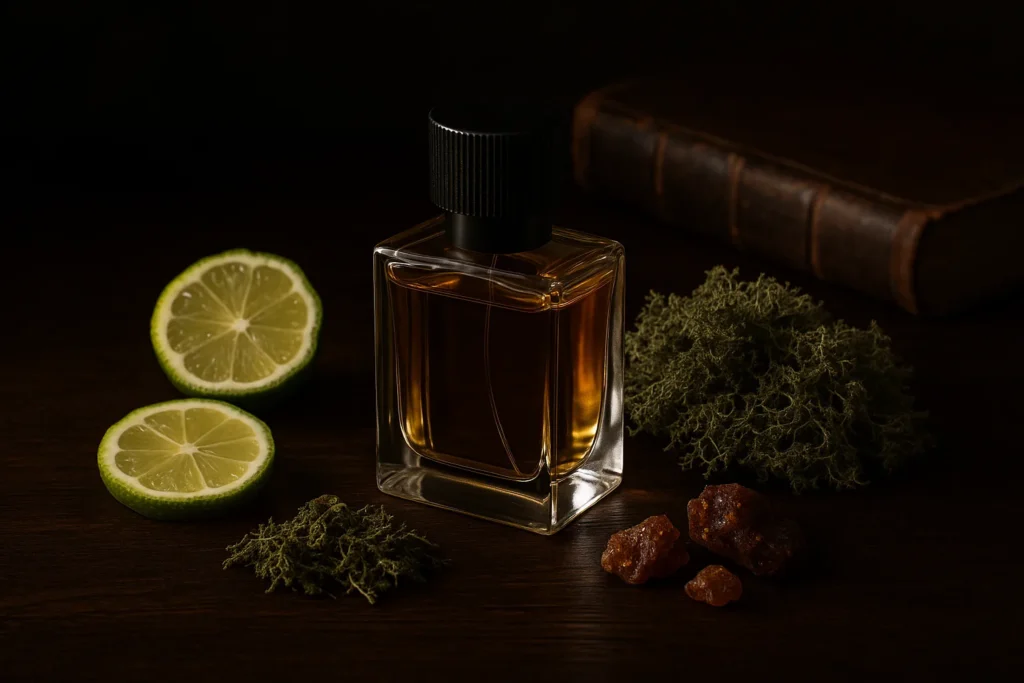
Essence: Mossy, elegant, sophisticated.
Structure: Citrus top, oakmoss and labdanum base.
Example: Guerlain Mitsouko.
Fougère
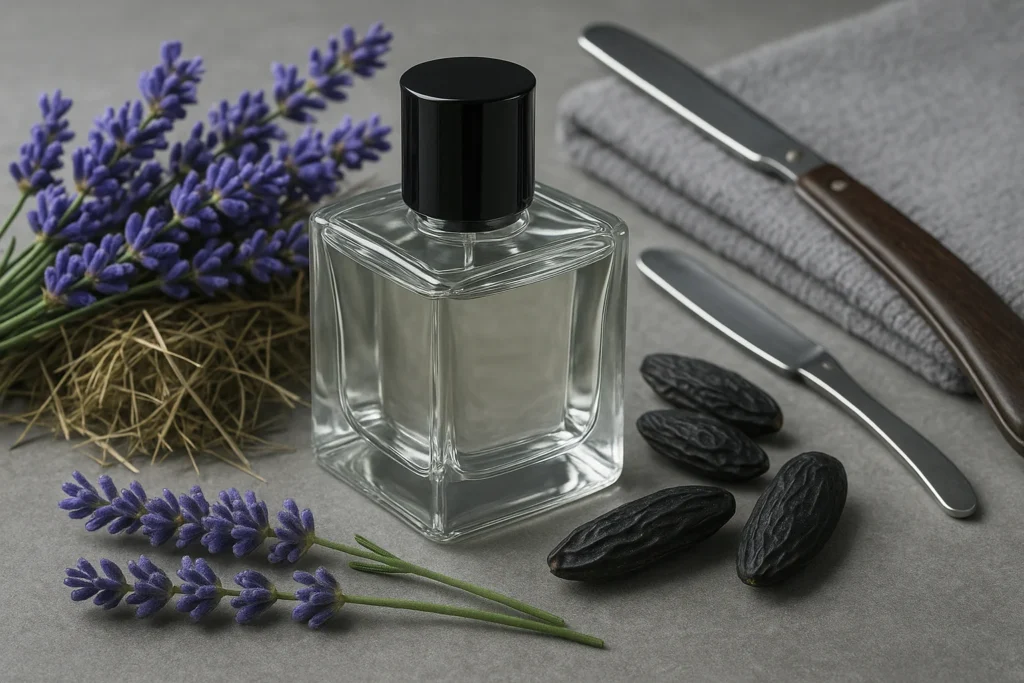
Essence: Aromatic, herbal, and clean.
Structure: Lavender, coumarin, woods.
Example: Dior Sauvage.
Read our Dior Sauvage Flanker Comparrassion here!
Jean-Claude Ellena, in Perfume: The Alchemy of Scent, describes these two as the backbone of modern perfumery.
Other Important Fragrance Families
Citrus
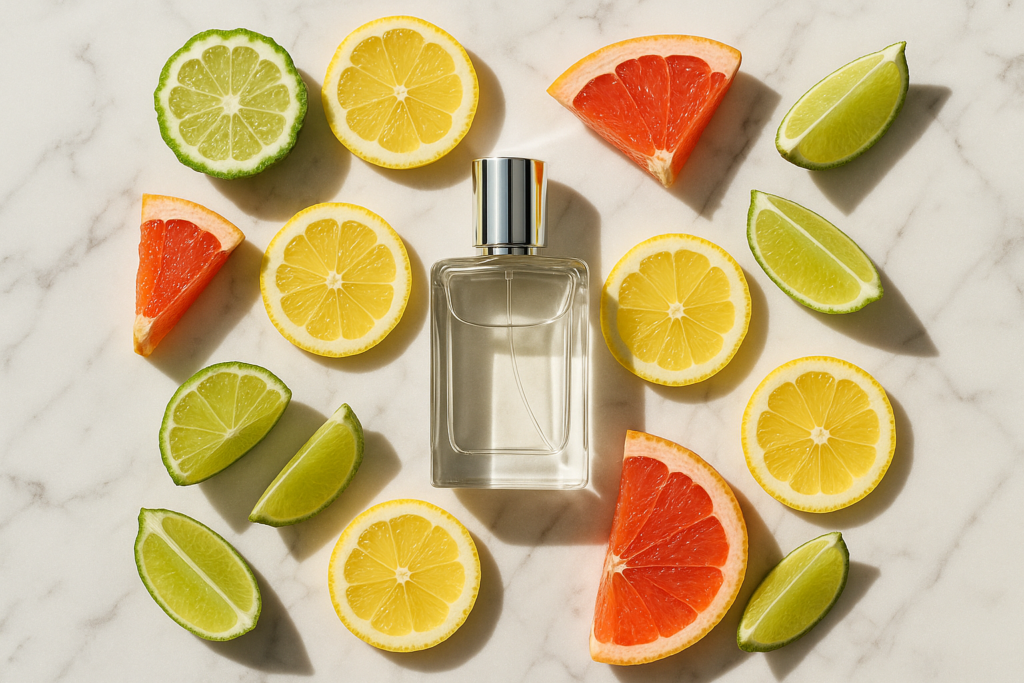
Bright and sparkling, centered on lemon, bergamot, and mandarin. Perfect for summer mornings.
Examples: Acqua di Parma Colonia, Tom Ford Neroli Portofino.
Green
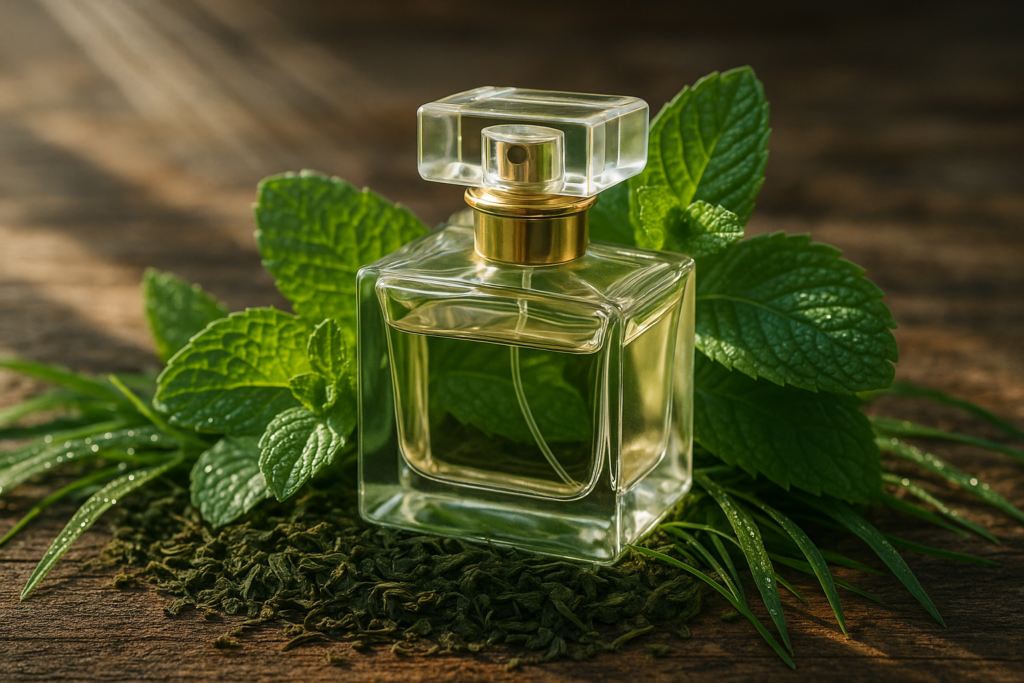
Evocative of leaves, grass, and nature. Crisp and refreshing.
Examples: Chanel No. 19, Diptyque Philosykos.
Fruity
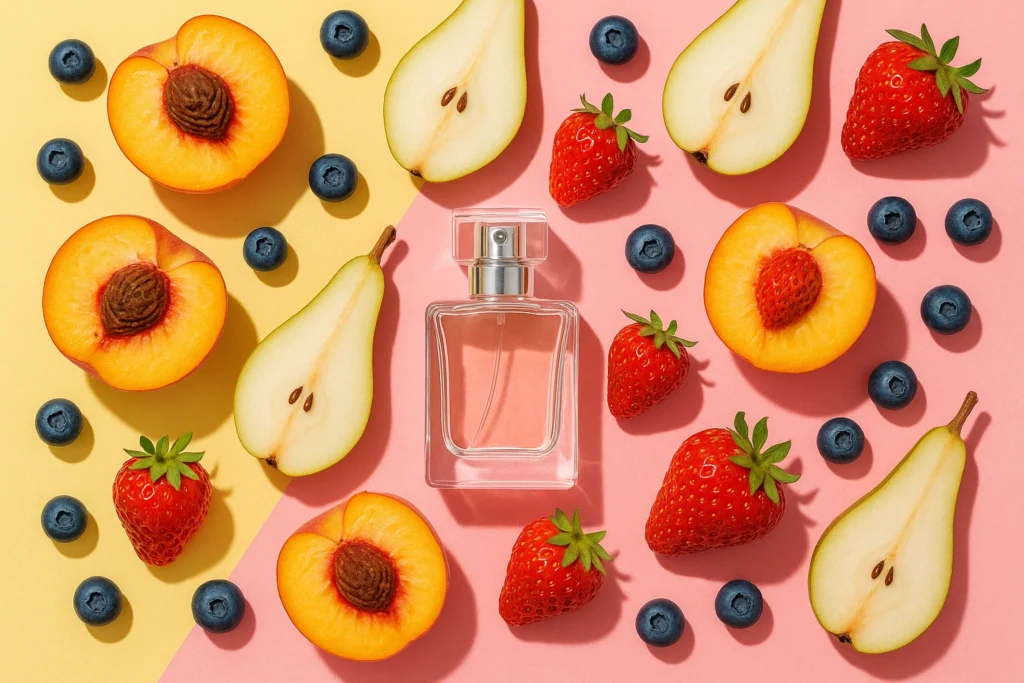
Juicy and playful, often paired with florals or vanilla.
Examples: Byredo Pulp, Escada collections.
Leather
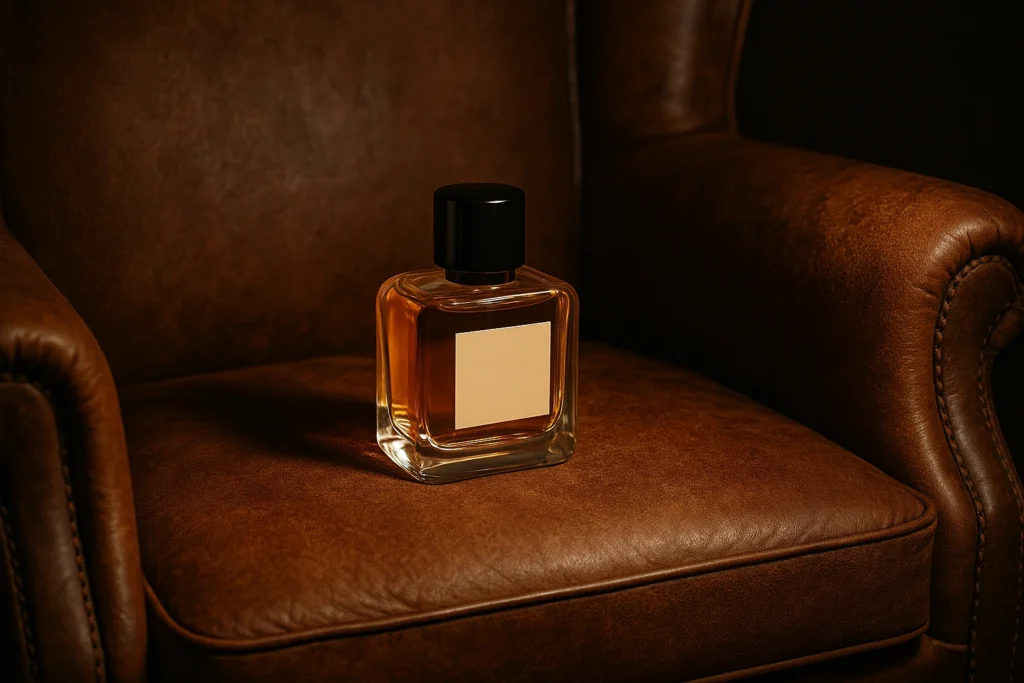
Rich, smoky, and refined. Perfect for cooler evenings.
Examples: Tom Ford Ombre Leather, Memo Paris Irish Leather.
Aromatic
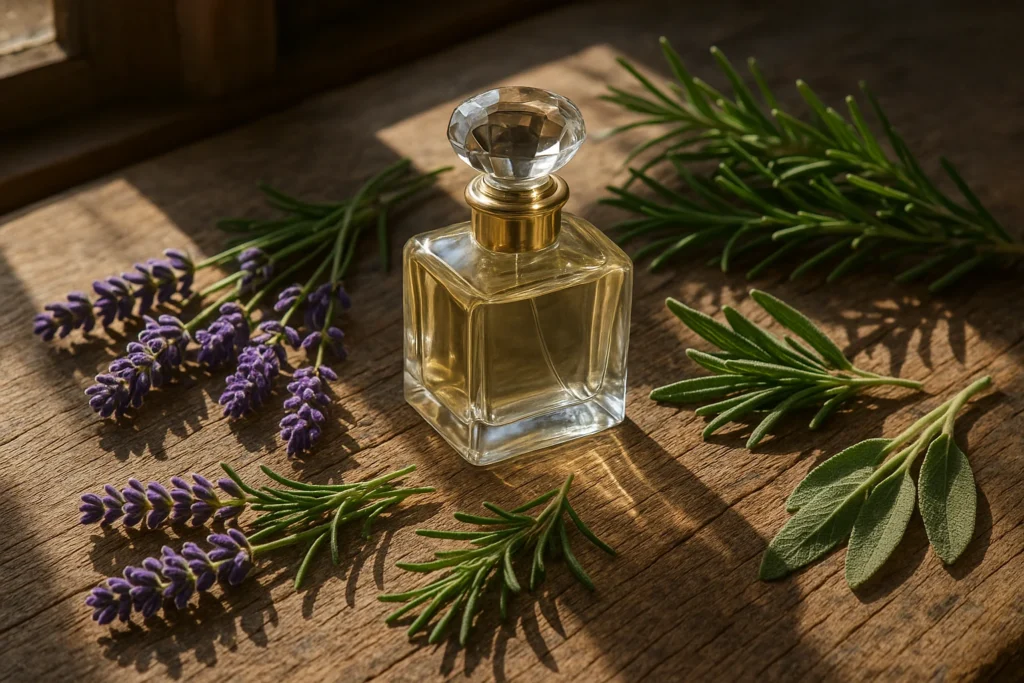
Herbal and fresh, often with lavender or rosemary.
Examples: Prada Luna Rossa, Penhaligon’s Sartorial.
Aquatic
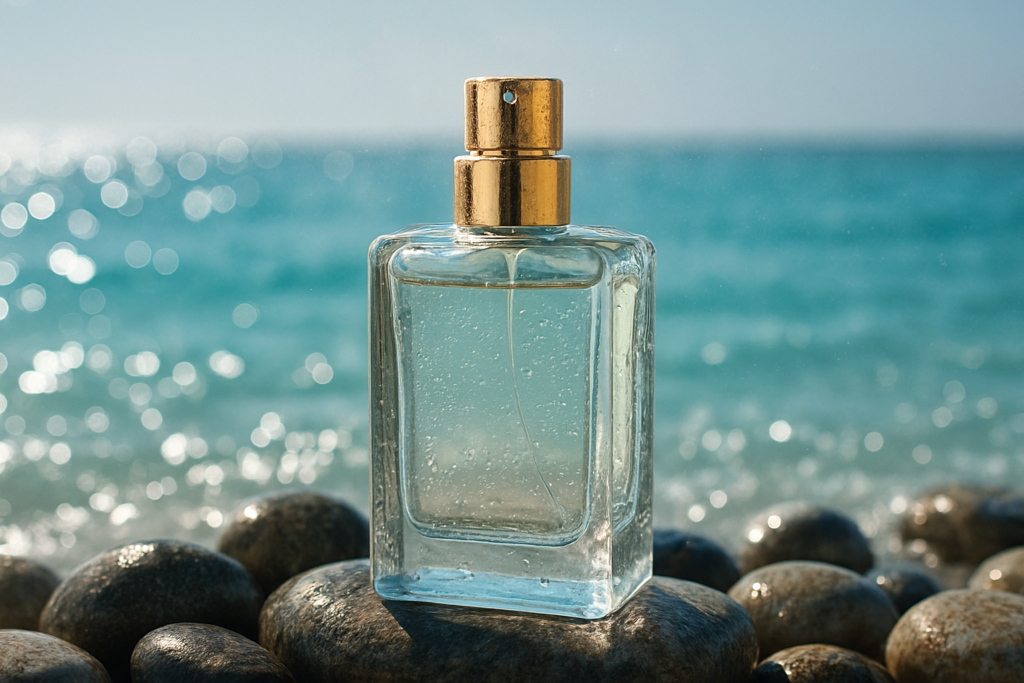
Sea breeze, salty air, rain-inspired.
Examples: Armani Acqua di Giò, Maison Margiela Sailing Day.
Aldehydic
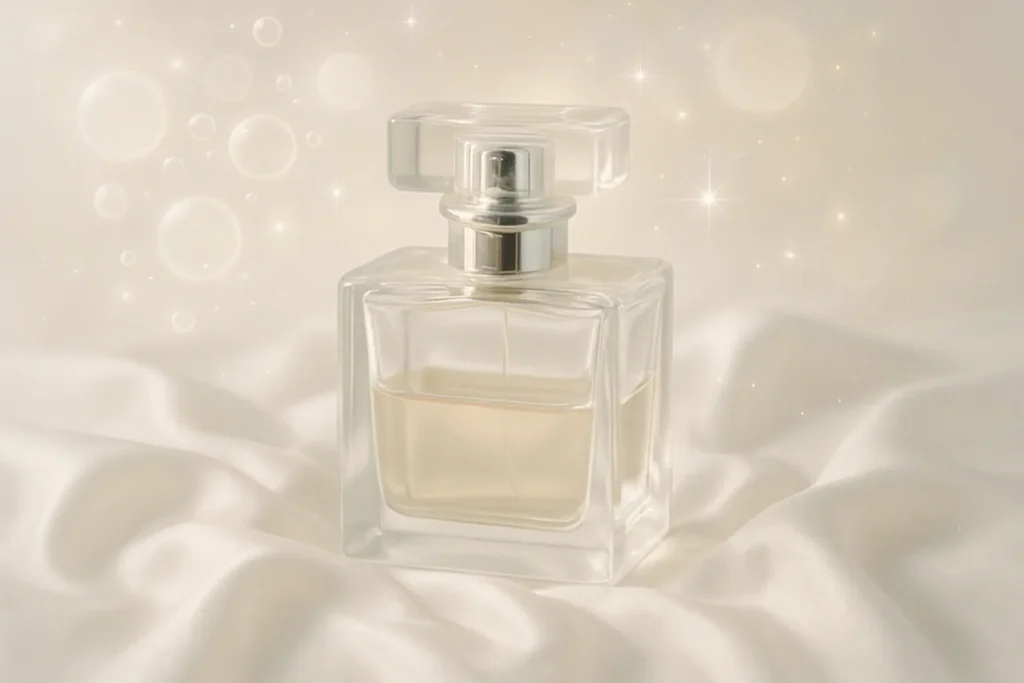
Sparkling, soapy, champagne-like effect on florals.
Examples: Chanel No. 5, Maison Francis Kurkdjian 724.
Mossy Woods
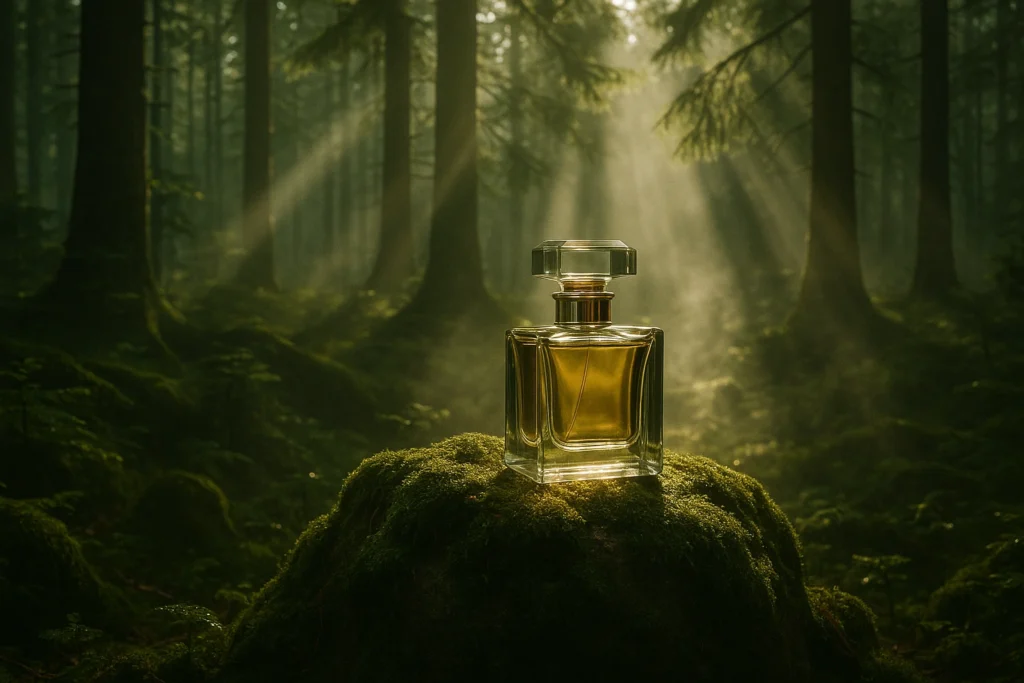
Vintage, mossy, and formal.
Examples: Chanel Pour Monsieur, Aramis.
Dry Woods
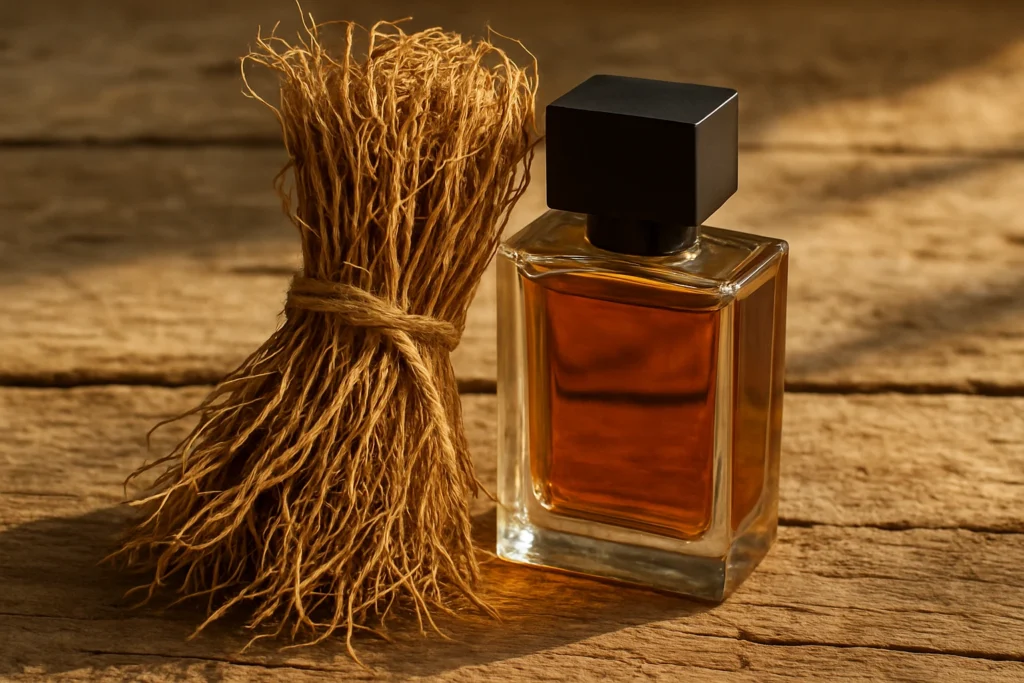
Smoky vetiver and cedar facets.
Examples: Lalique Encre Noire, Le Labo Cedar 11.
Ambery Floral
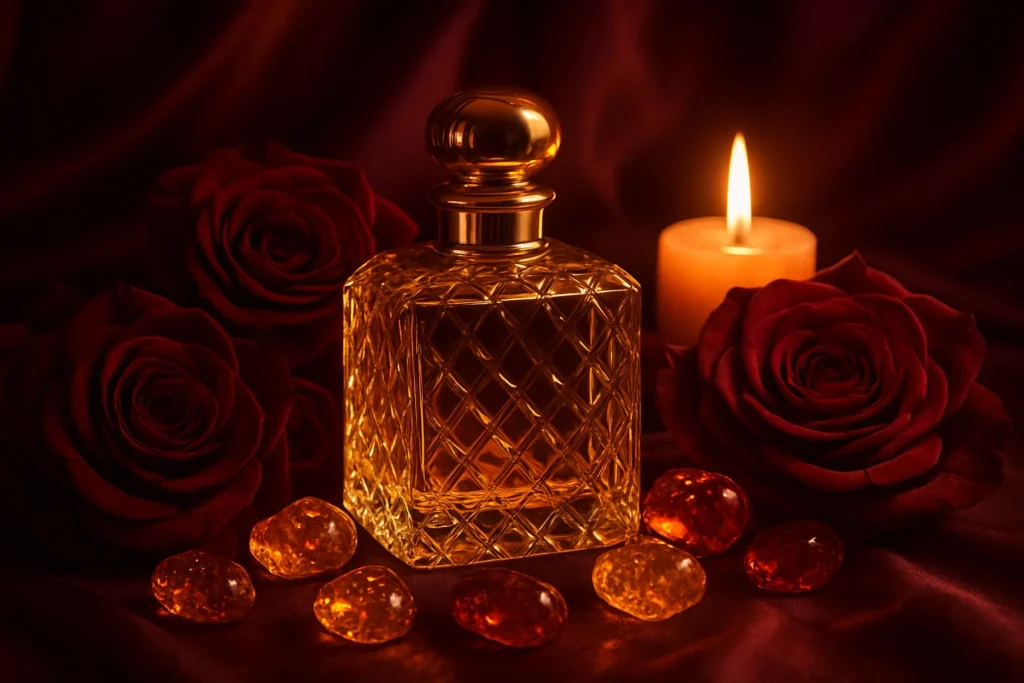
Flowers wrapped in amber warmth.
Examples: Baccarat Rouge 540, Mon Guerlain.
Woody Amber
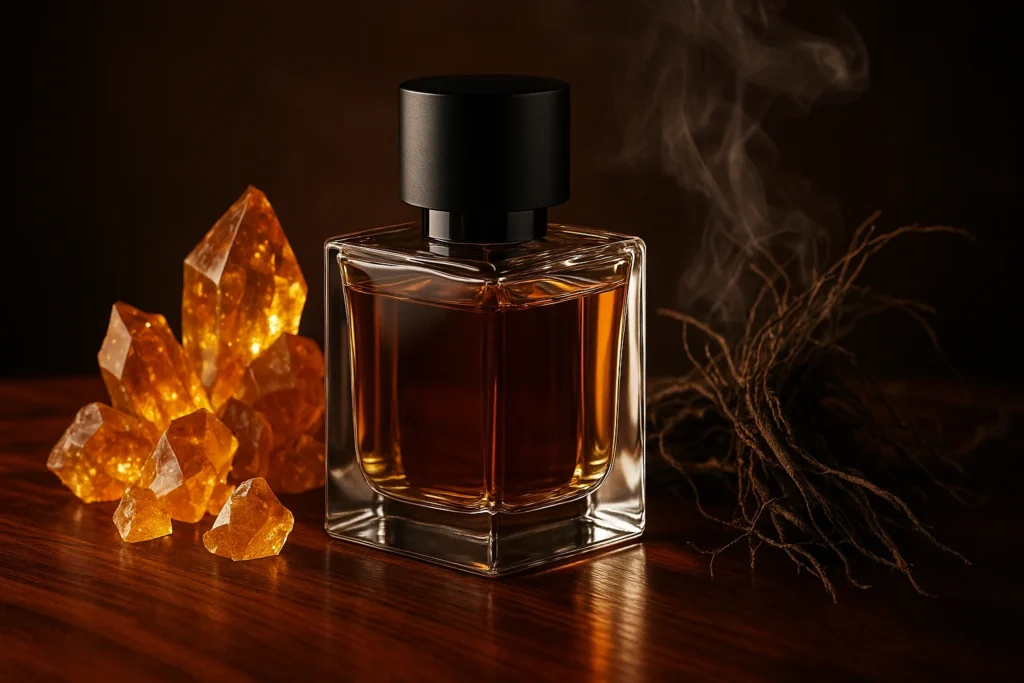
Modern, radiant, and powerful.
Examples: Dior Sauvage, Initio Side Effect.
Soft Floral
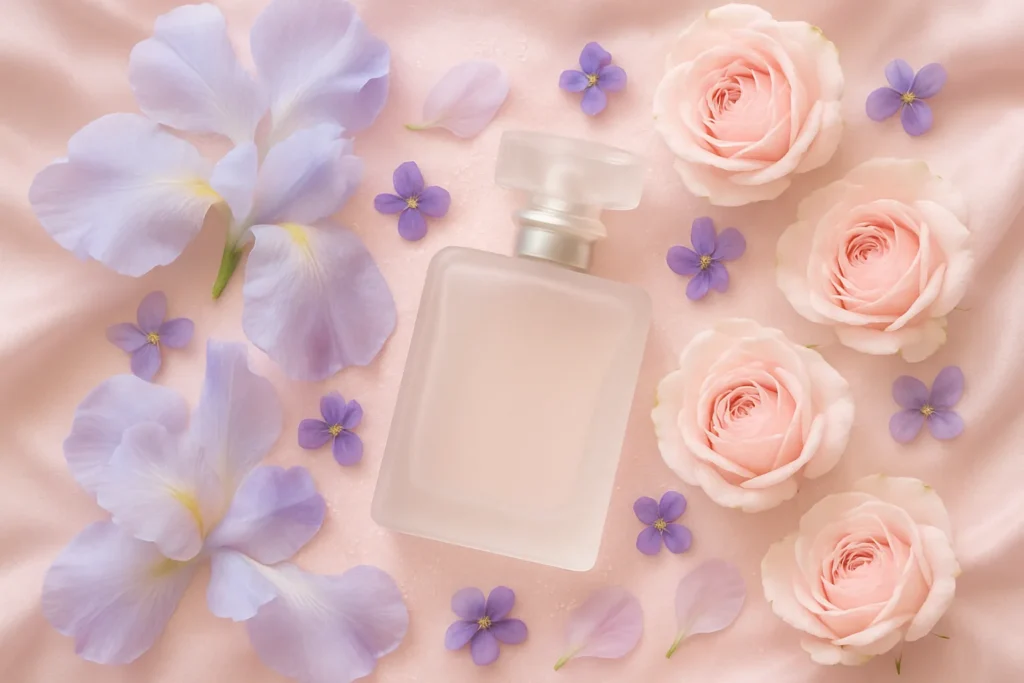
Powdery, musky, delicate.
Examples: Prada Infusion d’Iris, Narciso Rodriguez For Her.
Soft Amber
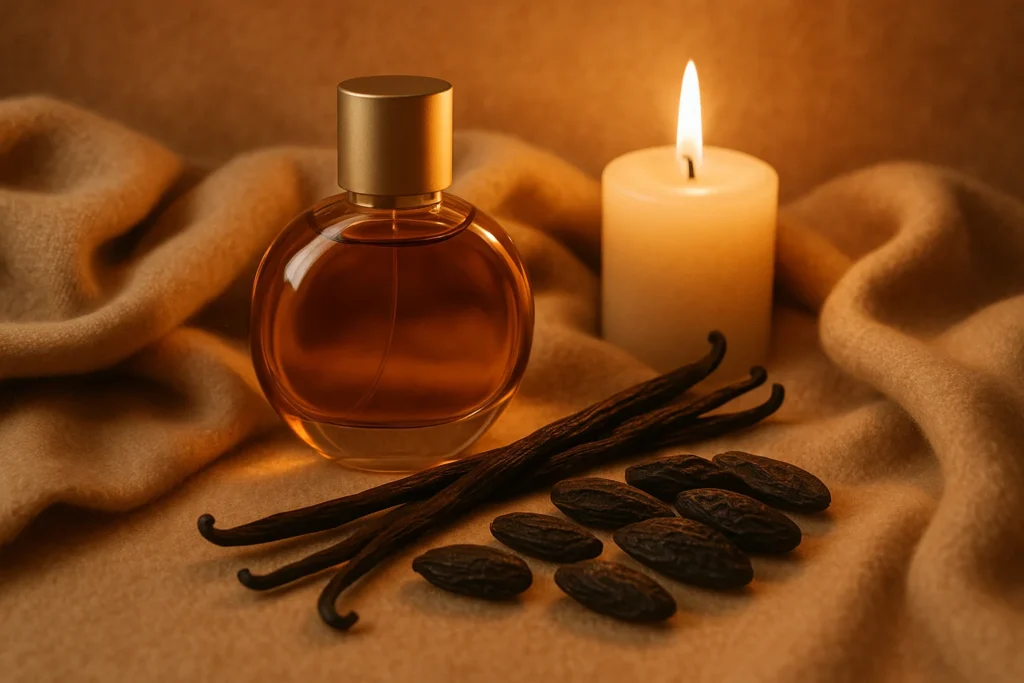
Cozy, sweet, but not heavy.
Examples: Replica By the Fireplace, Kayali Vanilla 28.
Gourmand
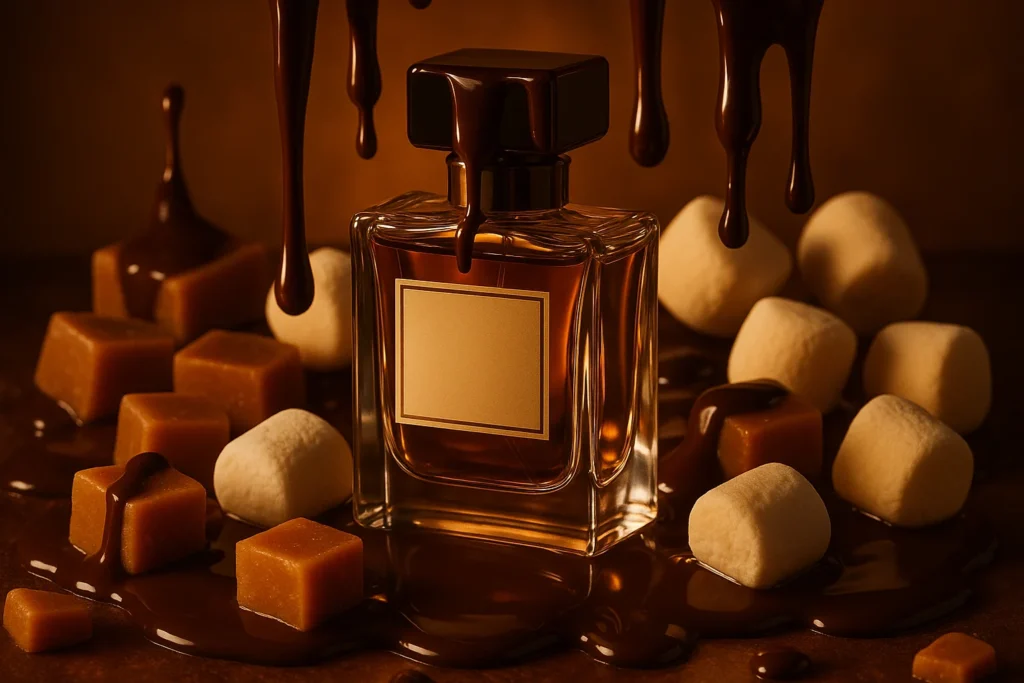
Sweet, edible perfumes with chocolate, caramel, and coffee.
Examples: Kilian Love, Don’t Be Shy, Mugler Angel.
How Knowing What Are Fragrance Families Can Help You Find Your Signature Scent
Knowing what fragrance families are helps you identify what you love, expand into related families, and build consistency. If you are exploring your identity, my guide on how to find your signature scent will take you deeper.
Seasonal Cheat Sheet on What Are Fragrance Families
| Family | Best Season | Personality | Perfect For |
|---|---|---|---|
| Fresh | Spring & Summer | Energetic, clean | Office, gym, beach |
| Floral | Year-round | Romantic, classic | Dates, daily wear |
| Woody | Autumn & Winter | Grounded, chic | Evenings, work |
| Amber | Autumn & Winter | Warm, sensual | Romance, parties |
| Chypre | Autumn | Elegant, vintage | Formal events |
| Fougère | Year-round | Clean, timeless | Everyday wear |
| Citrus | Summer mornings | Sparkling, casual | Travel, outdoors |
| Fruity | Spring & Summer | Playful, modern | Brunch, casual dates |
| Leather | Autumn & Winter | Bold, refined | Evenings, statement style |
For a full guide, see how to know which season a fragrance is designed for.
Common Misconceptions About What Are Fragrance Families
Families follow strict seasonal rules: False. These are guidelines. Wear what feels right.
Fact: They are guidelines. Wear what makes you feel good, adjusting the number of sprays.
Floral is only for women: False. Rose and lavender have always been masculine, too.
Woody is too strong for daily wear: False. Light sandalwood or cedar is subtle and elegant.
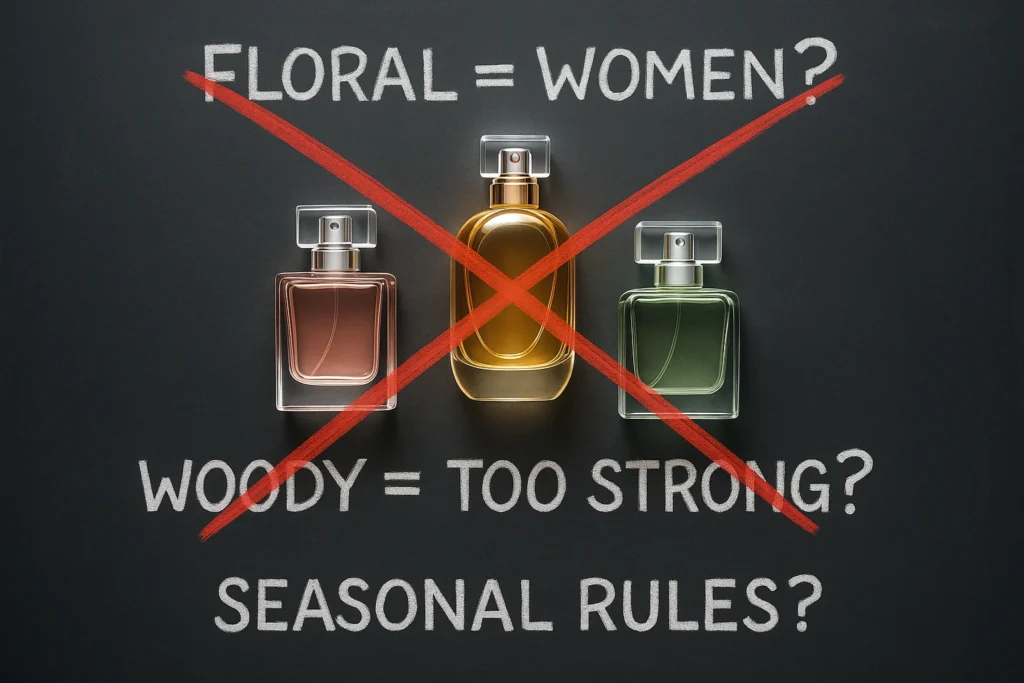
FAQs About What Are Fragrance Families
They are categories that group perfumes by their main scent style, such as Fresh, Floral, Woody, Amber, Chypre, and Fougère.
Fresh, Floral, Woody, and Amber.
Chypre is mossy and citrus-based. Fougère is aromatic and herbal with lavender.
Yes. Gourmand is often considered a modern subfamily of Amber.
Woody, Amber, and Gourmand tend to last longer because of heavier base notes.
Fresh, Aquatic, and light Floral.
No. Perfume is unisex. Gendered marketing is just a convention.
They make it easier to blend. For example, Fresh with Floral, or Woody with Amber.
Of course. Most people enjoy several and switch depending on mood or season.
Conclusion on What Are Fragrance Families.
Understanding what are fragrance families is the foundation of perfume knowledge. They simplify the perfume world, guide you to the right choices, and open doors to exploration.
At Liquo, I have seen how learning about fragrance families changes everything. Clients go from overwhelmed to excited. They gain confidence in describing what they like, and they discover perfumes they never expected to enjoy.

Perfume should never feel confusing. It should feel personal, playful, and expressive. Use fragrance families as your guide, then let your nose and emotions lead the way.
If you want to keep exploring the world of fragrance, these guides will help you go deeper:
What Is Perfume for a clear, beginner-friendly introduction.
How to Find Your Signature Scent to discover perfumes that reflect your personality.
What is musk in Perfumery? For this clean note guide.
How to Know Which Season a Fragrance Is Designed For, so you can match scents to the right moment.
I may earn a commission if you buy through links on this page, at no extra cost to you. As an Amazon Associate, I earn from qualifying purchases. I only recommend fragrances I’ve tested or genuinely believe in.

About Rodrigo Hernández
Fragrance consultant at Liquo (Santiago, Chile). I test designer and niche releases weekly, keep personal wear logs, and cross-check notes and performance in different climates. Opinions are my own; no brand pays for favorable coverage.
Contact: contact@scentchronicles.com

